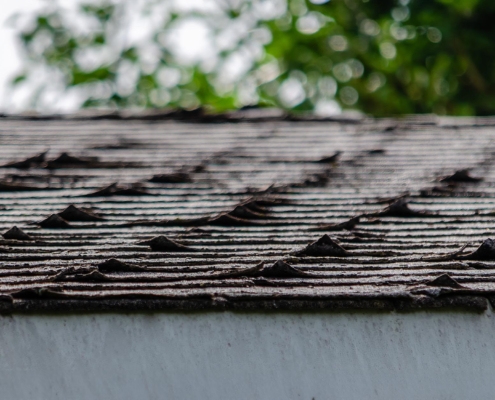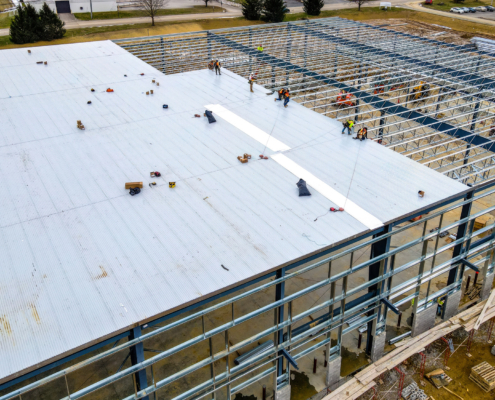 https://paramountkangaroof.com/wp-content/uploads/2023/11/Front-view-of-two-professionals-conducting-a-roof-inspection.jpg
1250
2000
AbstraktMarketing
/wp-content/uploads/2023/11/cropped-Paramount-Kangaroof-300x174-1.webp
AbstraktMarketing2023-11-13 09:00:002025-09-12 13:29:47How Often Should Your Roof be Inspected?
https://paramountkangaroof.com/wp-content/uploads/2023/11/Front-view-of-two-professionals-conducting-a-roof-inspection.jpg
1250
2000
AbstraktMarketing
/wp-content/uploads/2023/11/cropped-Paramount-Kangaroof-300x174-1.webp
AbstraktMarketing2023-11-13 09:00:002025-09-12 13:29:47How Often Should Your Roof be Inspected?How Often Should You Have a Roof Inspection Performed?
The roof is a crucial component of any building, protecting it from the elements and maintaining its integrity. Regular roof inspections performed by reputable, experienced professionals are an important part of preventive maintenance, helping to detect and manage potential issues before they spiral out of control. However, a common question among property owners is how often should you have your roof inspected. This article helps answer this question and understand the importance of regular roof inspections for residential and commercial buildings.
Understanding the Importance of Regular Roof Inspections
A roof inspection is crucial for any business or homeowner. Insurance companies often require periodic roof inspections to maintain coverage. Staying current with roof inspections enables owners to identify issues early and make repairs before expensive damage occurs. Many factors influence roof lifespan, so regular reviews are critical.
The Consequences of Skipping Roof Inspections
Neglecting regular roof inspections leads to accelerated deterioration and expensive repairs for homes and commercial facilities. Unaddressed issues worsen over time. For instance, a minor roof leak can progress to soaked insulation, rotted rafters, mold, and interior damage without proper maintenance.
Inadequate attic ventilation also causes problems with roof systems. Issues like pooled water or debris accumulation accelerate wear. Tree limbs rubbing the roof surface can gradually damage shingles. Identifying such problems early is key.
Skipping inspections also risks invalidating insurance policies. Most policies require maintenance and inspections to maintain coverage. Failing to inspect enables unnoticed wear until severe enough to produce a claim. This often nullifies the policy.
The Role of Arizona’s Weather in Roof Damage
Arizona’s climate increases roof wear and tear, demonstrating the importance of periodic inspections. The extreme heat cooks roofing materials, shortening their lifespan. Monsoon storms and wind gusts loosen shingles and flashings over time.
Hail is also common in Arizona, puncturing shingles and membranes. The intense sun UV exposure degrades materials. Large daily/seasonal temperature swings cause expansion and contraction that stresses roof components.
Taken together, Arizona’s weather necessitates vigilant roof maintenance and frequent inspections. Identifying wear early allows repairs before problems compound or leaks develop internally. This protects your most significant assets—your home or workplace.

How Often Should I Have My Roof Inspected?
With a clearer understanding of why you should have your roof inspected, let’s now turn our attention to how frequently you should schedule inspections:
Commercial Roofing Systems
Commercial roofing systems should be inspected twice annually due to their expansive size, importance, and material differences. Their large footprint makes thorough inspection difficult in one visit. Semiannual reviews ensure complete coverage.
As commercial roofs are essential revenue generators, it is vital to catch issues early. Their premature failure brings heavy financial losses through business interruption. Different materials like TPO and EPDM membranes require specialized inspection approaches.
Residential Roofing Systems
For residential roofs, an annual inspection is generally recommended at a minimum. Homeowners should also inspect their roofs themselves periodically after severe weather. Professional yearly inspections enable catching issues early before they worsen.
Asphalt shingle roofs may only require inspection every 3-5 years until later in their lifespan. Tile, metal, and other longer-lasting roofs can potentially go 5+ years between professional inspections when newer. Homeowner periodic reviews and consulting with a professional on how often you should have your roof inspected remain a wise decision.
In general, erring on the side of more frequent professional inspections for residential roofs ensures you catch issues early. This maximizes roof lifespan and avoids costly repairs.
Factors Influencing the Frequency
While yearly roof inspections are the general rule of thumb, some circumstances necessitate more or less frequent attention. Let’s examine things that may factor into your decision:
Roof Age
As the roof ages, more frequent inspections become necessary. Brand new roofs may only need one inspection in the first year. But as the roof passes 5-7 years old, annual reviews are wise.
Once a roof hits 10 to 15 years old, inspections every 6 months are ideal. At this age, issues begin cropping up more frequently. Very old roofs of 20+ years should be inspected quarterly when replacement is delayed.
Material
The roofing material also influences inspection frequency. Asphalt shingles are vulnerable to damage, so they benefit from annual reviews. Shake, slate, and tile roofs are very durable, so inspections every 3-5 years may suffice when newer.
Metal roofs are nearly indestructible when installed correctly, warranting only occasional inspections. Thermoplastic membranes on commercial roofs need vigilant biannual reviews.
Nearby Trees and Debris
Nearby trees dropping leaves/limbs on the roof accelerates wear and clogs gutters/drains. More frequent inspections help identify associated damage early. Abundant airborne debris also increases roof deterioration, warranting extra reviews.
Vigilant cleaning and semiannual inspections are wise for roofs under trees or with excessive debris exposure. This monitoring allows addressing wear before it compounds or leaks arise.
Previous Repairs and Maintenance
Roofs that have undergone lots of repairs or modifications merit frequent inspections. The more repairs a roof receives, the shorter its remaining lifespan generally. Many repairs demonstrate existing issues.
Intensive repairs/modifications often produce vulnerabilities if improper. The inspector should pay special attention to repaired areas. Annual reviews for roofs with repairs assist in the early identification of associated recurring issues.
Wondering what professional roof inspections commonly uncover? This article explores the common issues found during inspections.
Understanding the Roof Inspection Process: A User-Friendly Guide
Here is an example of the typical roof inspection process:
Visual Assessment:
- The roof inspector examines the roof, checking for damaged, loose, or missing shingles or tiles.
- Deterioration of flashing, excessive moss, or debris buildup is also noted.
- Proper roof slope and drainage are evaluated to prevent water pooling.
Detailed Examination:
- Vulnerable areas like edges, valleys, chimneys, and skylights are carefully analyzed.
- The inspector looks for cracks, corrosion, or other issues that could lead to leakage.
Attic Ventilation Check:
- Inspection of intake and exhaust vents to ensure proper airflow through the attic space.
Hands-On Analysis (If Needed):
- Further examination of specific areas of concern.
- Probing wood shakes or shingles to check for hidden damage.
- Checking insulation depth and looking for water stains or rot around ceilings, walls, or framing.
Summary and Reporting:
- The inspector compiles findings in a detailed report.
- The report includes issues found, accompanied by photos.
- Estimates the remaining lifespan of the roof.
- Provides recommendations for repairs, maintenance, or replacement if necessary.
Discussion With Inspector:
- It is essential to talk through the results with the inspector.
- Their expertise helps catch problems you might overlook, ensuring a comprehensive understanding of your roof’s condition.
The Benefits of Keeping a Routine Roof Inspection Schedule
Regularly inspecting your roof is critically important for maintaining your home’s structural integrity. Here are some key benefits of sticking to a routine roof inspection schedule:
- Catch problems early: Scheduling inspections every year or two allows you to identify minor issues before they become major repairs. For example, a few damaged shingles can be fixed easily but left unaddressed; this can turn into a costly roof replacement.
- Prevent damage: An inspection may reveal areas vulnerable to leakage, excessive wear, or other problems. Performing preventative maintenance helps avoid costly damage from water intrusion or decay.
- Extend roof life: Your roof is a long-term investment expected to last 15 to 25 years or more. Proper care and maintenance are crucial for maximizing its lifespan before needing to re-roof.
- Maintain warranty: Many roofing material and installation warranties require periodic inspections. Staying on schedule ensures your coverage remains valid.
- Prepare for disasters: If you live in an area prone to severe storms, fires, or other disasters, inspections make sure your roof is in the best possible shape to withstand damage.
- Avoid insurance issues: Keeping up with roof maintenance provides evidence to insurance companies that you’ve correctly cared for your home’s most important asset.
- Save money: The cost of an inspection is minor compared to repairing significant damage that could have been prevented. Prioritizing roof exams in your home maintenance budget pays off.
Schedule Your Free Roof Inspection With Paramount Kanga Roof Today
For over 13 years, we’ve helped home and business owners keep their roofing systems in top shape by providing thorough roof inspections. If you’re due for an annual inspection or can’t remember the last time a professional looked over your roof, contact us today. We provide free, no-obligation inspections to help you identify any issues and find peace of mind that your top asset is ready to protect you, your family, or your business.
Related Postings
 https://paramountkangaroof.com/wp-content/uploads/2023/11/Front-view-of-two-professionals-conducting-a-roof-inspection.jpg
1250
2000
AbstraktMarketing
/wp-content/uploads/2023/11/cropped-Paramount-Kangaroof-300x174-1.webp
AbstraktMarketing2023-11-13 09:00:002025-09-12 13:29:47How Often Should Your Roof be Inspected?
https://paramountkangaroof.com/wp-content/uploads/2023/11/Front-view-of-two-professionals-conducting-a-roof-inspection.jpg
1250
2000
AbstraktMarketing
/wp-content/uploads/2023/11/cropped-Paramount-Kangaroof-300x174-1.webp
AbstraktMarketing2023-11-13 09:00:002025-09-12 13:29:47How Often Should Your Roof be Inspected? https://paramountkangaroof.com/wp-content/uploads/2023/11/Front-view-of-several-curling-roof-shingles.jpg
1250
2000
AbstraktMarketing
/wp-content/uploads/2023/11/cropped-Paramount-Kangaroof-300x174-1.webp
AbstraktMarketing2023-11-08 09:00:002025-09-12 13:29:49The Impact of Heat on Your Roof
https://paramountkangaroof.com/wp-content/uploads/2023/11/Front-view-of-several-curling-roof-shingles.jpg
1250
2000
AbstraktMarketing
/wp-content/uploads/2023/11/cropped-Paramount-Kangaroof-300x174-1.webp
AbstraktMarketing2023-11-08 09:00:002025-09-12 13:29:49The Impact of Heat on Your Roof https://paramountkangaroof.com/wp-content/uploads/2023/10/Tips-on-Choosing-the-Right-Commercial-Roofing-Contractor-for-Your-Project.jpg
1250
2000
AbstraktMarketing
/wp-content/uploads/2023/11/cropped-Paramount-Kangaroof-300x174-1.webp
AbstraktMarketing2023-10-09 09:00:002025-09-12 13:29:50Tips on Choosing the Right Commercial Roofing Contractor for Your Project
https://paramountkangaroof.com/wp-content/uploads/2023/10/Tips-on-Choosing-the-Right-Commercial-Roofing-Contractor-for-Your-Project.jpg
1250
2000
AbstraktMarketing
/wp-content/uploads/2023/11/cropped-Paramount-Kangaroof-300x174-1.webp
AbstraktMarketing2023-10-09 09:00:002025-09-12 13:29:50Tips on Choosing the Right Commercial Roofing Contractor for Your Project



